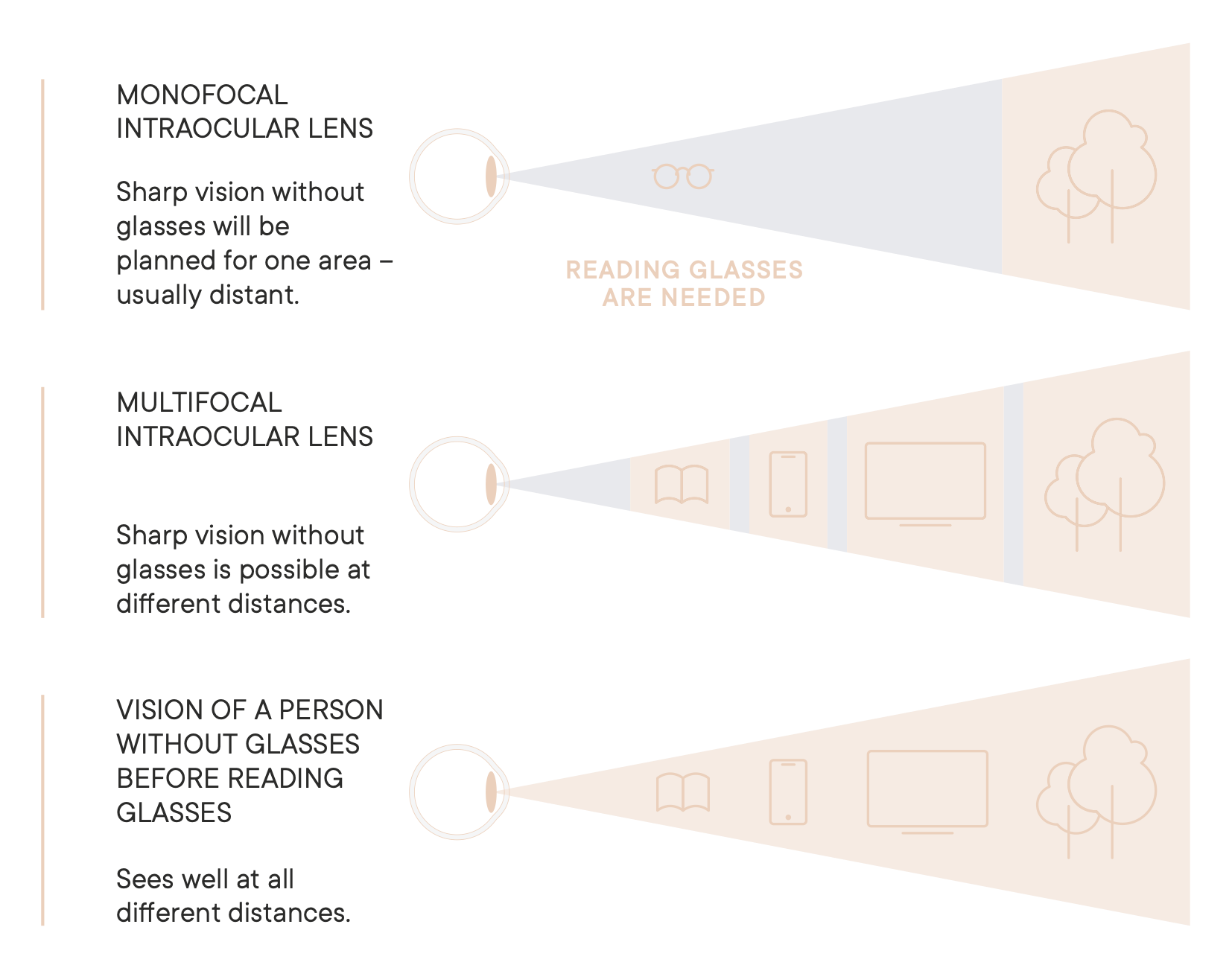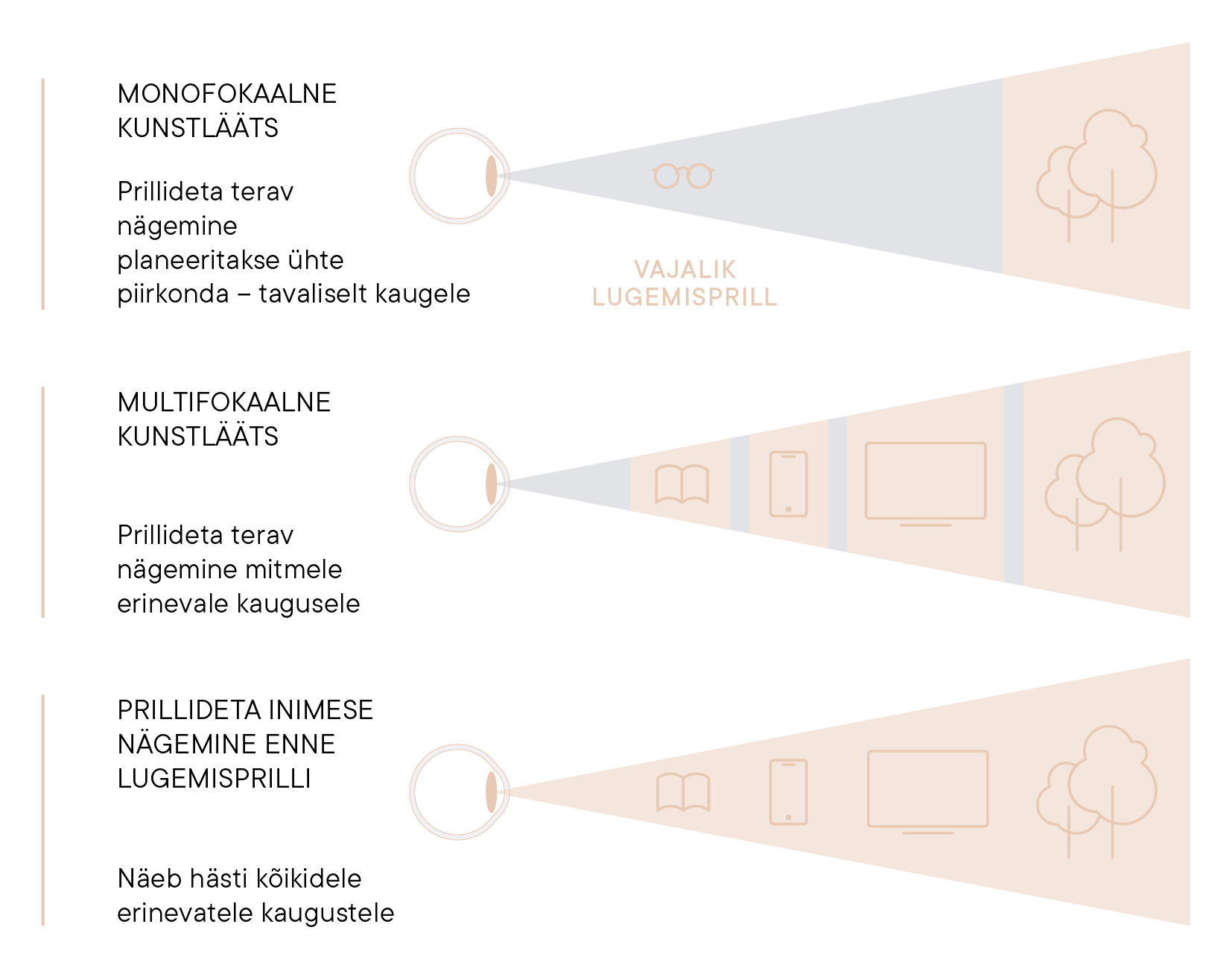Initial changes in the lens of the eye occur at the age of 40- 45 when people experience the need for reading glasses. Lens surgery is gaining more and more popularity all over the world as a way to decrease dependence on glasses or even get rid of glasses in people over the age of 40. Refractive lens replacement surgery is technically the same as cataract surgery, but it has a different indication. The aim of refractive lens replacement surgery is to decrease the patient’s dependence on glasses. Cataract is clouding of the lens that occurs sooner or later in almost all people.
Lens replacement surgery can be performed with different artificial lenses:
Monofocal intraocular lens – the lens has one fixed focus. The patient can choose between two alternatives:
-
The power of the intraocular lens will be chosen so that the eye sees distant objects better without glasses but the patient needs reading glasses for close work.
-
The power of the intraocular lens will be chosen so that the eye sees close objects better without glasses but the patient needs minus glasses for looking at distant objects and walking in the street.
Monovision will be enabled using two monofocal intraocular lenses that have different power. The power of the intraocular lens will be chosen for one eye (usually leading eye) so that it sees distant objects better without glasses, and for the other eye so that it sees close objects better without glasses. The aim is the reduce the patient’s dependence on glasses when two eyes work in cooperation. Glasses are only needed for specific activities in most cases. Not all patients tolerate difference of refractive power of two eyes and this can be identified by prior consultation.
Toric intraocular lens is essentially monofocal intraocular lens but also corrects astigmatism or the need for cylindrical glasses.
Multifocal intraocular lens has multiple focuses. The aim is to achieve independence from glasses in all or most situations. It functions best when the patient has multifocal intraocular lens in both eyes.


